After a couple of days of rest, I set another day around the middle of October in order to go for the sightseeing of some parts of New York that I find interesting. On this day, I also had a serious mission: to find a grave!
To start with, I transferred by underground to the Bronx or, to be more precisely, to the north part of this New York borough. I have already mentioned before that New York is administratively divided into five boroughs: Manhattan, Brooklyn, Queens, the Bronx and Staten Island. This time around, I travelled from Queens, via Manhattan, to the Bronx, changing a couple of underground trains along the way. Concretely speaking, I was going to the Woodlawn Cemetery.
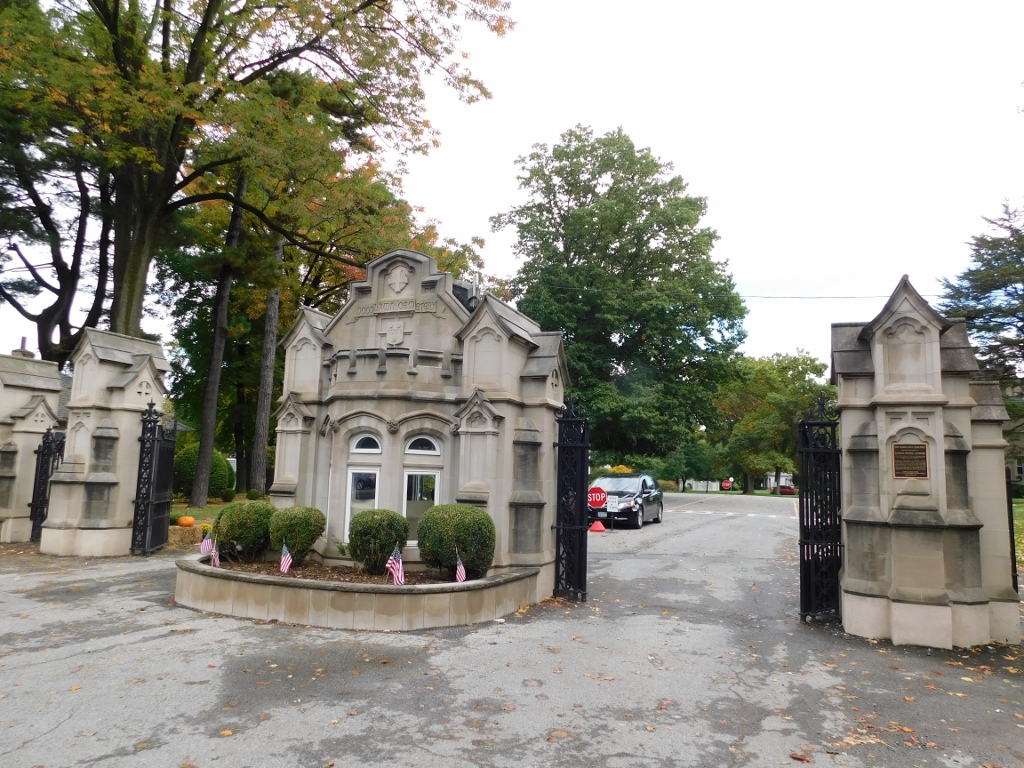 Entrance to Woodlawn Cemetery
Entrance to Woodlawn Cemetery
This is a large cemetery and it is not an easy thing to find a grave if you don’t know exactly where you are going. I did search on the internet, but at that time there was no clear information, so right after arriving here I went to a smaller administrative building and asked around. Namely, I was looking for the grave of Mihajlo Pupin.
I was given a map by a very kind lady and she marked the exact spot where the grave was and also gave me the instructions about getting there. Then she also asked me why I was looking for that particular grave. I told her I came from Serbia and it was all clear to her, since she knew Pupin was a Serb, but she also expressed her anger since there were apparently some attempts on the part of the Serbian diaspora to move the remains of the famous scientist back to Serbia. I told her I did not have any opinion about the matter, so there was no reason for her to be angry with me.
I must say that indeed I have no opinion about the matter. On the one hand, I can understand the arguments both for leaving the remains of Mihajlo Pupin where they are and for transferring them to Serbia. It is good that I don’t have to deal with it.
But, before reaching the grave of Mihajlo Pupin, not only did I have to walk through the cemetery, but I also paid attention to some of the details. Namely, the Woodlawn Cemetery has the status of a National Historic Landmark. It is characterised by the landscape-lawn style and because of the comparatively high popularity among famous and wealthy people, the tombstones in the broadest sense of meaning that can be seen at this cemetery constitute the biggest and best collection of funerary art in the USA.
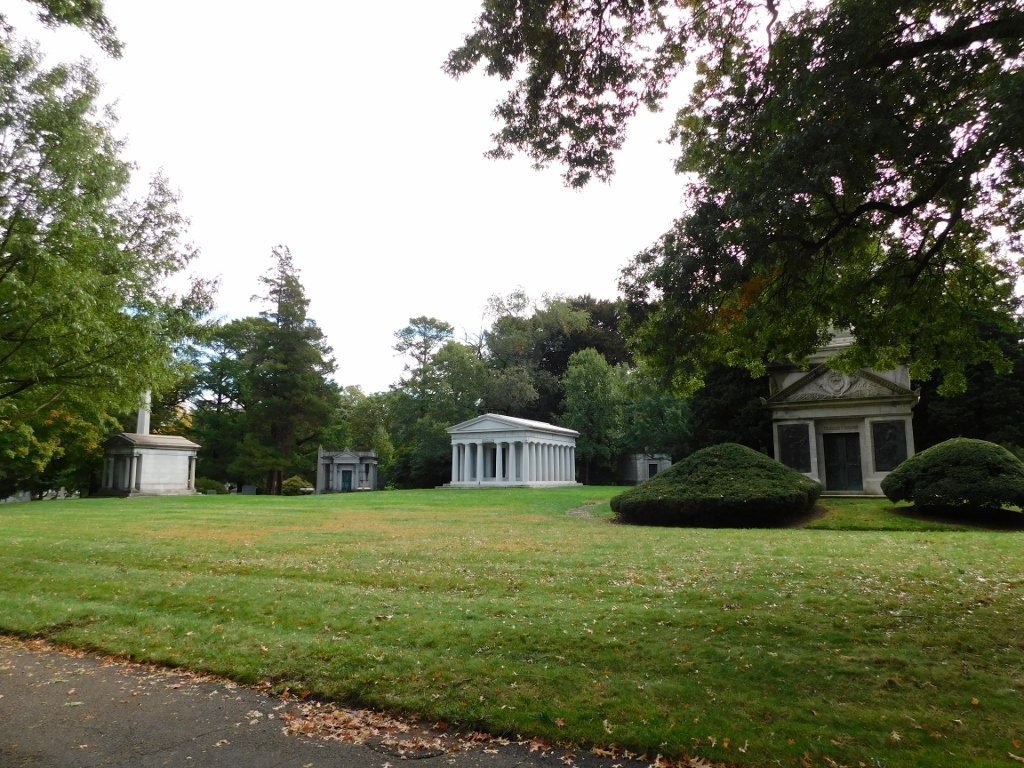 Woodlawn Cemetery
Woodlawn Cemetery
One of the famous persons buried at this cemetery is Barbara Woolworth Hutton (1912-1979) whose mausoleum you come across soon after entering the cemetery. Having inherited enormous wealth, she is famous for being one of the richest women back in the day. Because of the loads of money, but very challenging private life (among other things, she had seven husbands), she earned a nickname – Poor Little Rich Girl.
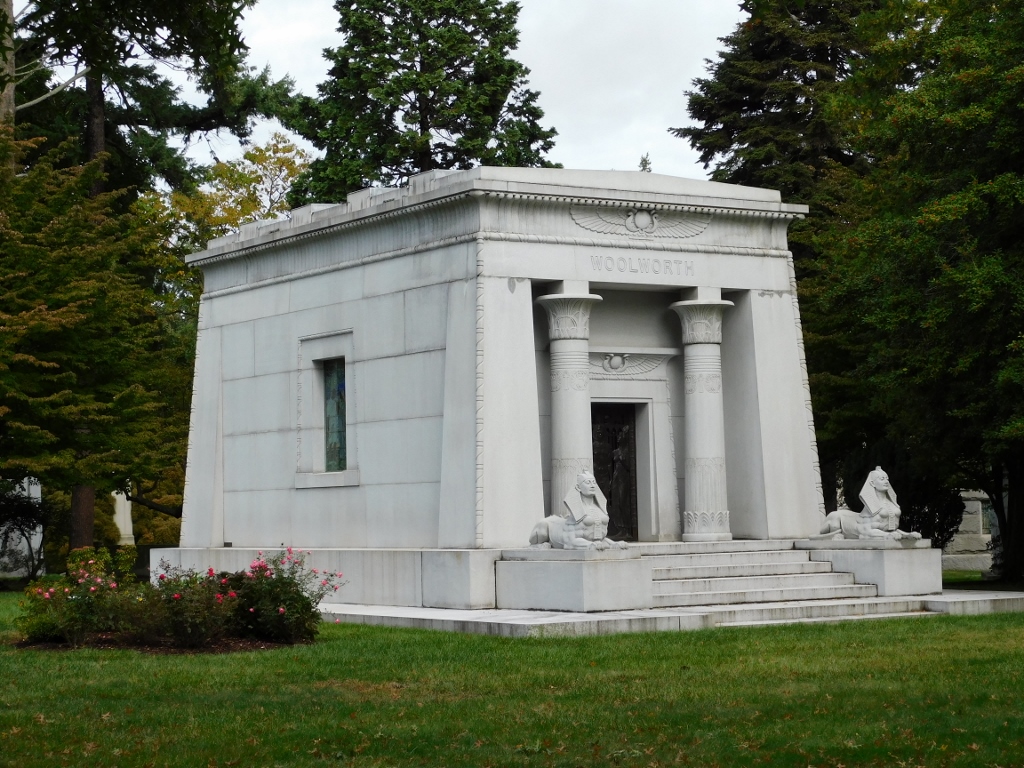 Mausoleum of Barbara Hutton
Mausoleum of Barbara Hutton
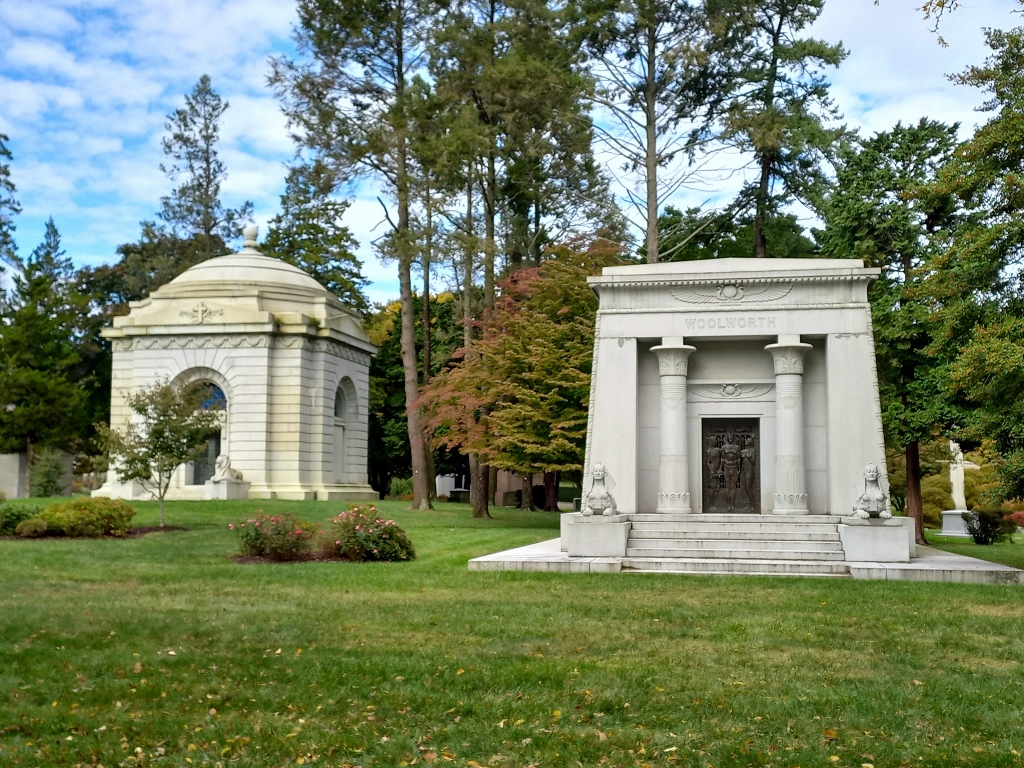 Woodlawn Cemetery
Woodlawn Cemetery
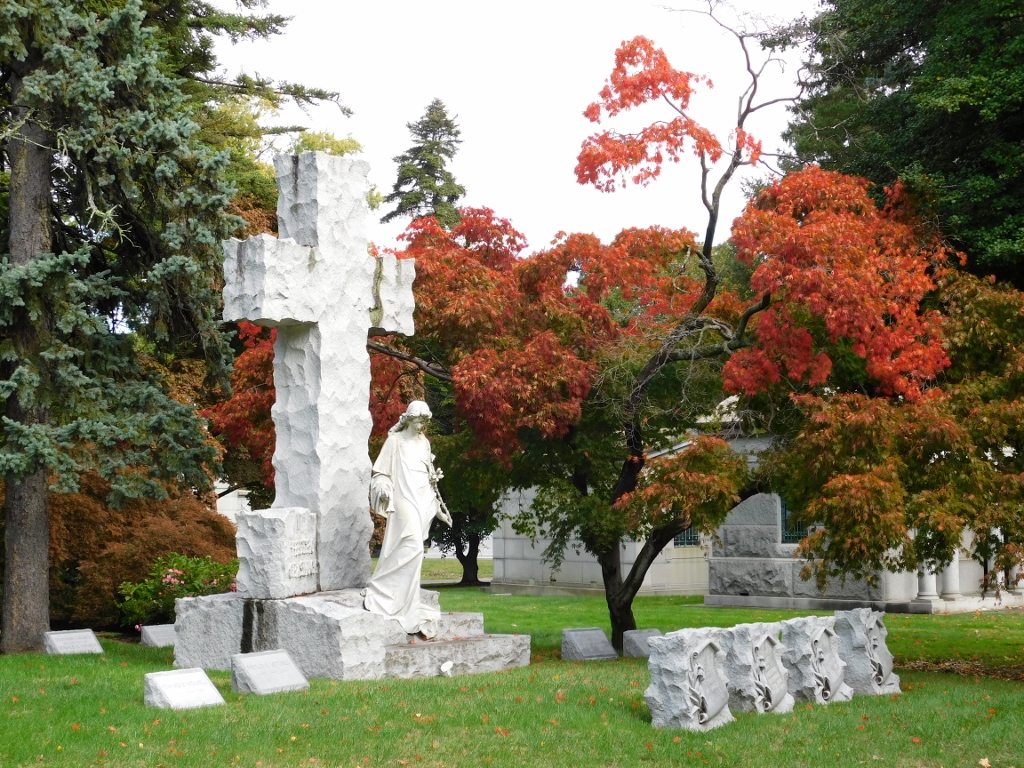 Woodlawn Cemetery
Woodlawn Cemetery
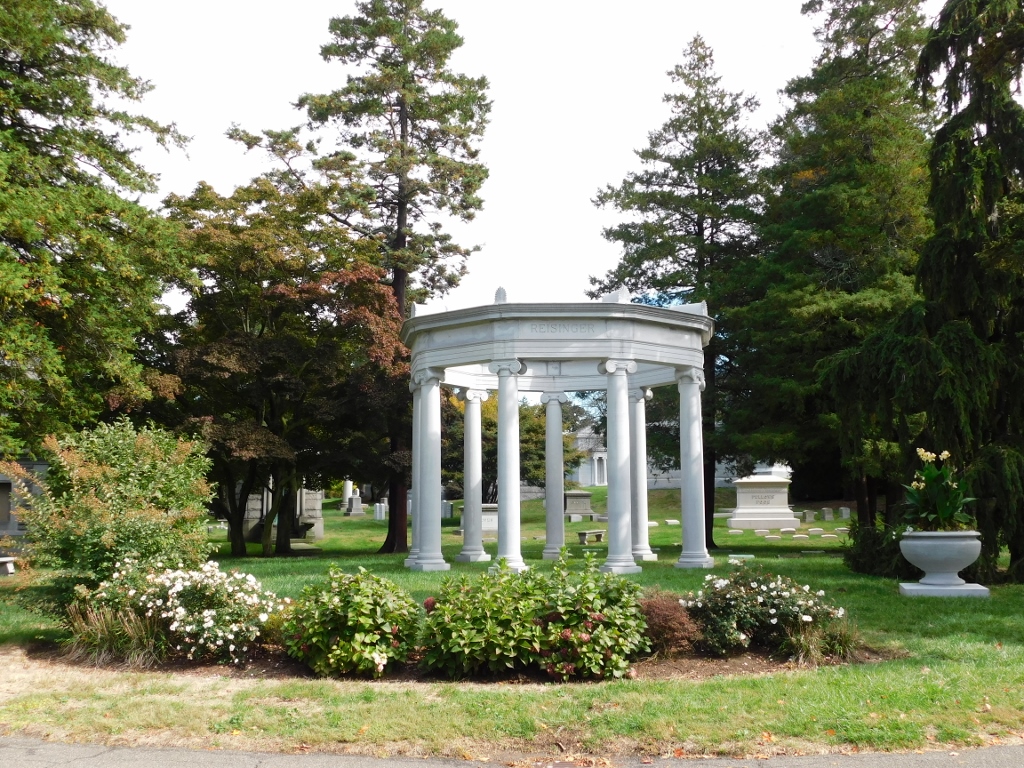 Woodlawn Cemetery
Woodlawn Cemetery
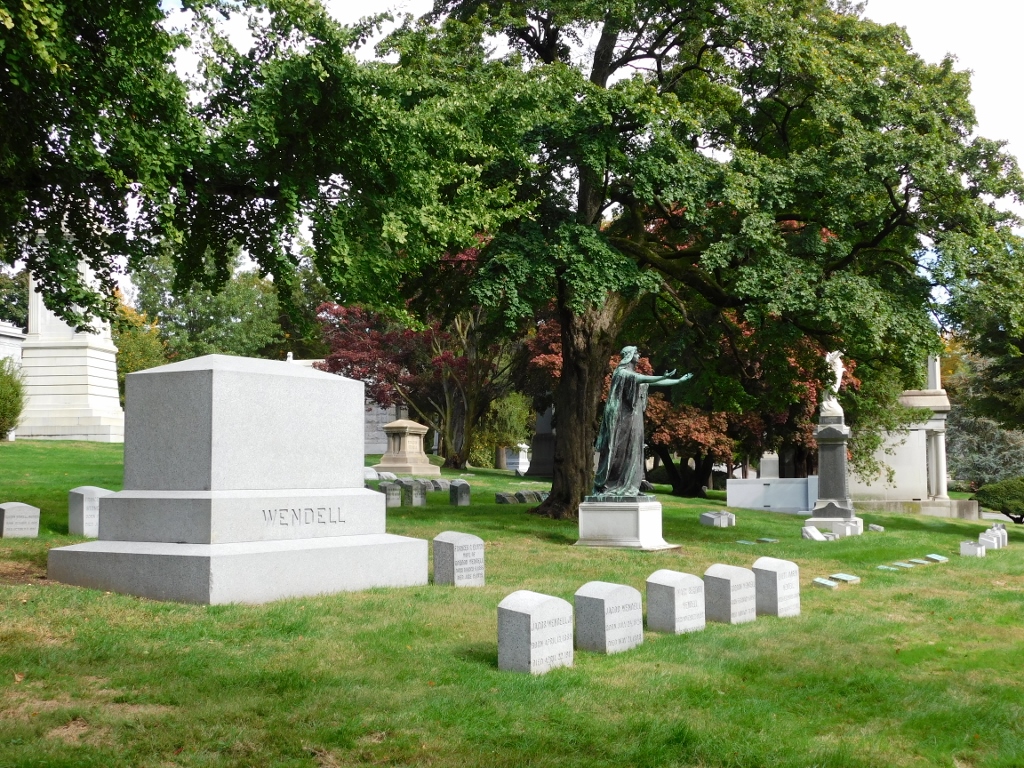 Woodlawn Cemetery
Woodlawn Cemetery
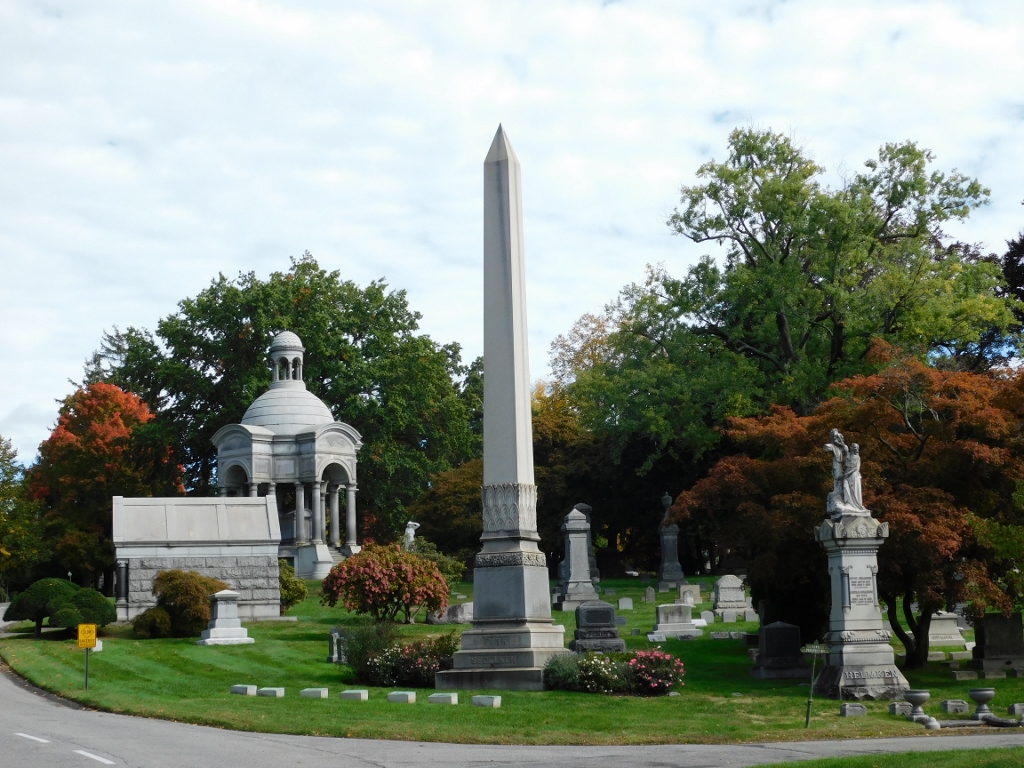 Woodlawn Cemetery
Woodlawn Cemetery
While I was walking here, the clouds dispersed almost completely and it was again quite a nice, sunny day.
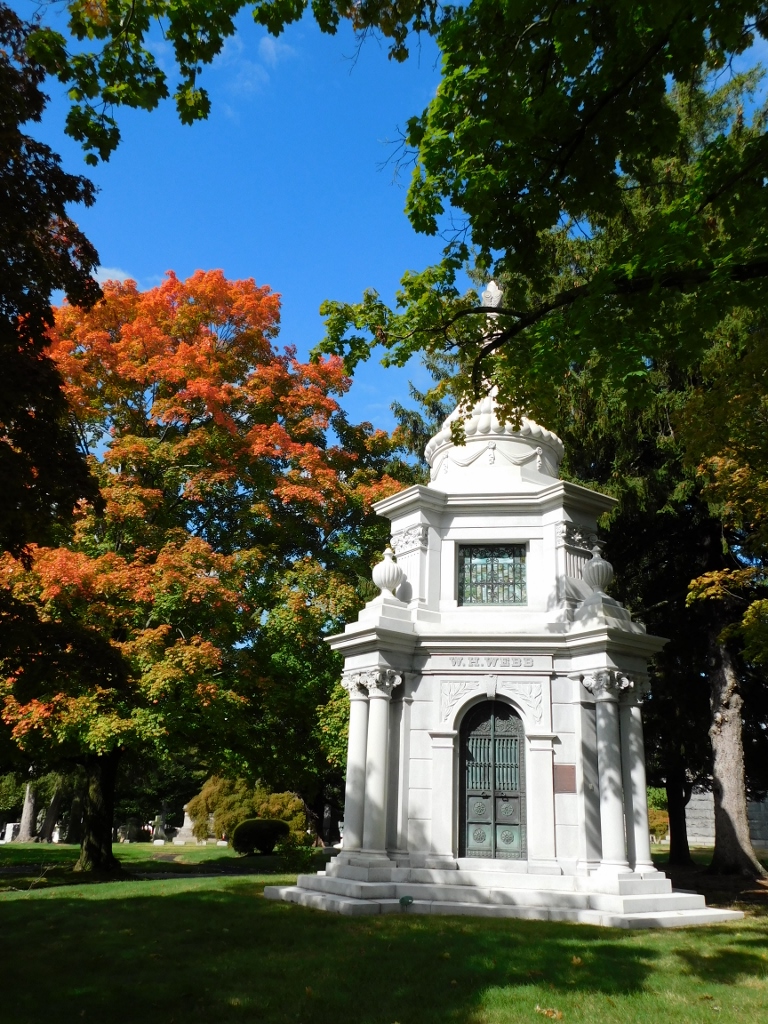 Woodlawn Cemetery
Woodlawn Cemetery
Soon I also reached the grave of Mihajlo Pupin and his wife. In comparison to those shown in the photos above, Pupin’s grave may seem too simple and modest for a rather affluent individual such as Mihajlo Pupin, but actually most of the graves are like that. On the other hand, it is much more important what one does during the life than the size and complexity of the mausoleum in which one is laid to rest. As a reminder, Mihajlo Pupin was a physicist who, among other things, came up with the way how to significantly extend the reach of telephonic communication. He owned 24 patents and also lectured at the prestigious Columbia University in New York.
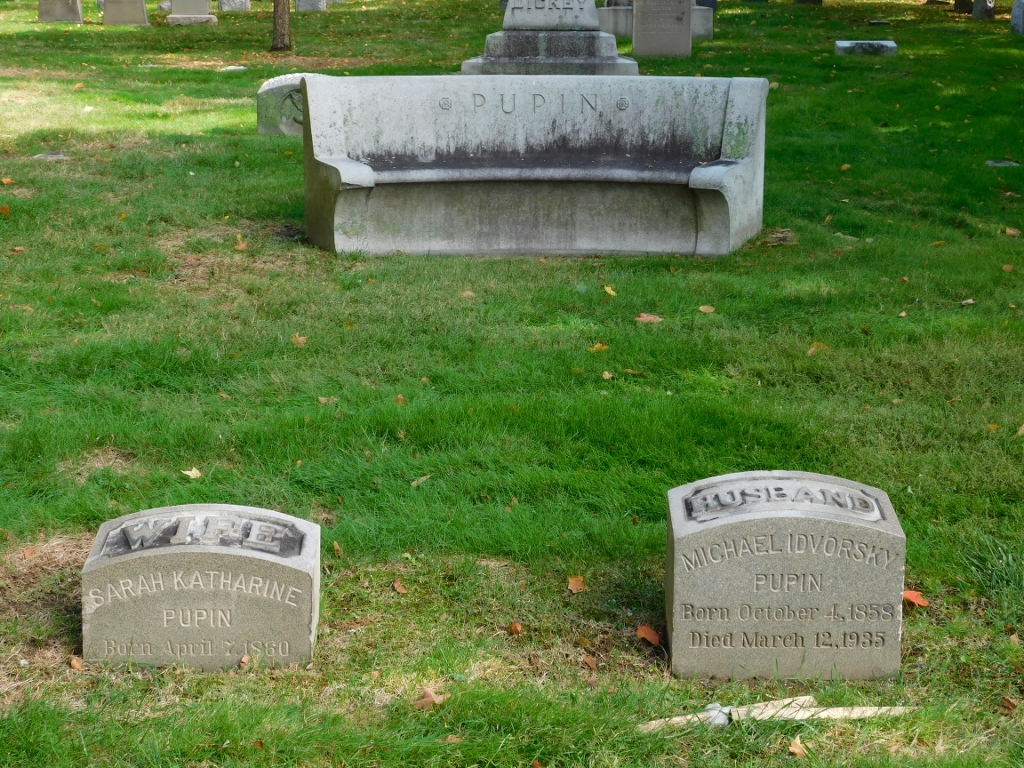 Grave of Mihajlo Pupin and his wife
Grave of Mihajlo Pupin and his wife
Since the use of the middle name is a rather standard practice in the USA, Mihajlo Pupin used “Idvorski” as his middle name which was in fact a reminder of his origin, since he was born in the village of Idvor in the region of Banat that he felt very attached to. You can read about the village of Idvor, my visit there, as well as some interesting details linked to the life of Mihajlo Pupin in my travelogue: https://www.svudapodji.com/en/idvor/. Also, although you can very often find on the internet the original of his name, i.e., Mihajlo Pupin, as it can be seen in the photo above, the tombstone displays the English version, i.e., Michael Pupin.
I did not have a good place where to position my photo-camera, so I had to be a little creative with my mobile phone in order to take a photo of everything I wanted to fit in.
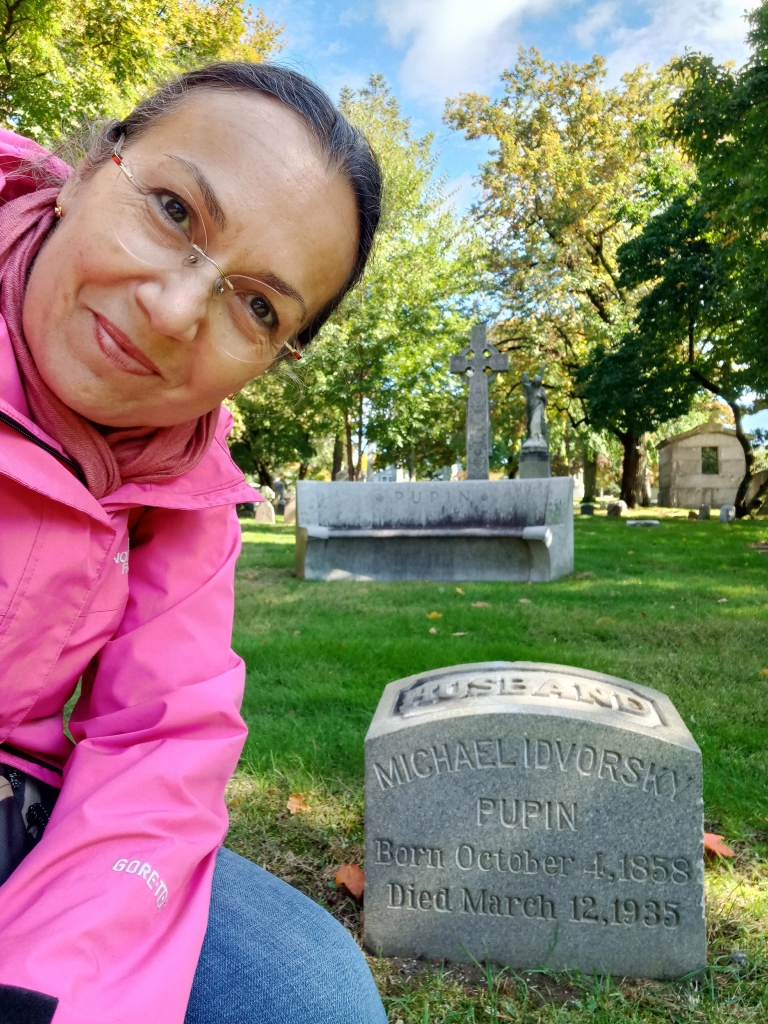 At the grave of Mihajlo Pupin
At the grave of Mihajlo Pupin
After the brief stay at Pupin’s grave, when I also marked the exact spot on the map that follows, I went back following the same route. Before leaving the Woodlawn Cemetery, once again I took a photo of the part of the cemetery that you first come across and then I boarded an underground train at a station that is only some hundred metres away from the entrance to the cemetery.
 Woodlawn Cemetery
Woodlawn Cemetery
In order to get to the next place that I was interested in I had to change trains, while the station at which I did it was located right next to the Yankee Stadium. This is the home field of a baseball club called New York Yankees. I have no clue about baseball and I must admit I don’t care about it at all, but... Even before reaching the stadium, there was a very nice family with me on the train: mom, dad, little brother and little sister. And all four of them were dressed in the jerseys of the New York Yankees and very joyful, for they were obviously going to a game. They kept taking photos one of the others, but then I offered to take a photo of all four of them using their mobile phone. I hope they liked the photos.
Needless to say, they were not the only fans getting off at this station, so I took the opportunity to take a photo of a few of them while they were still on the platform, plus of the crowds in front of the stadium that can be seen very well from the underground station.
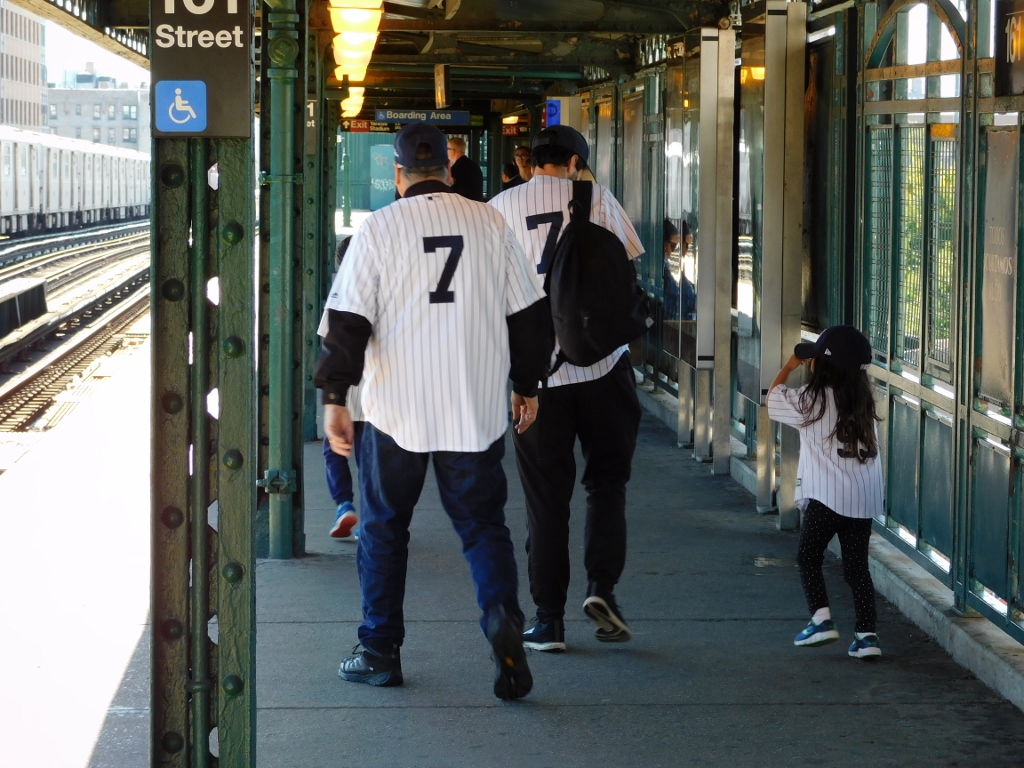 New York Yankees fans
New York Yankees fans
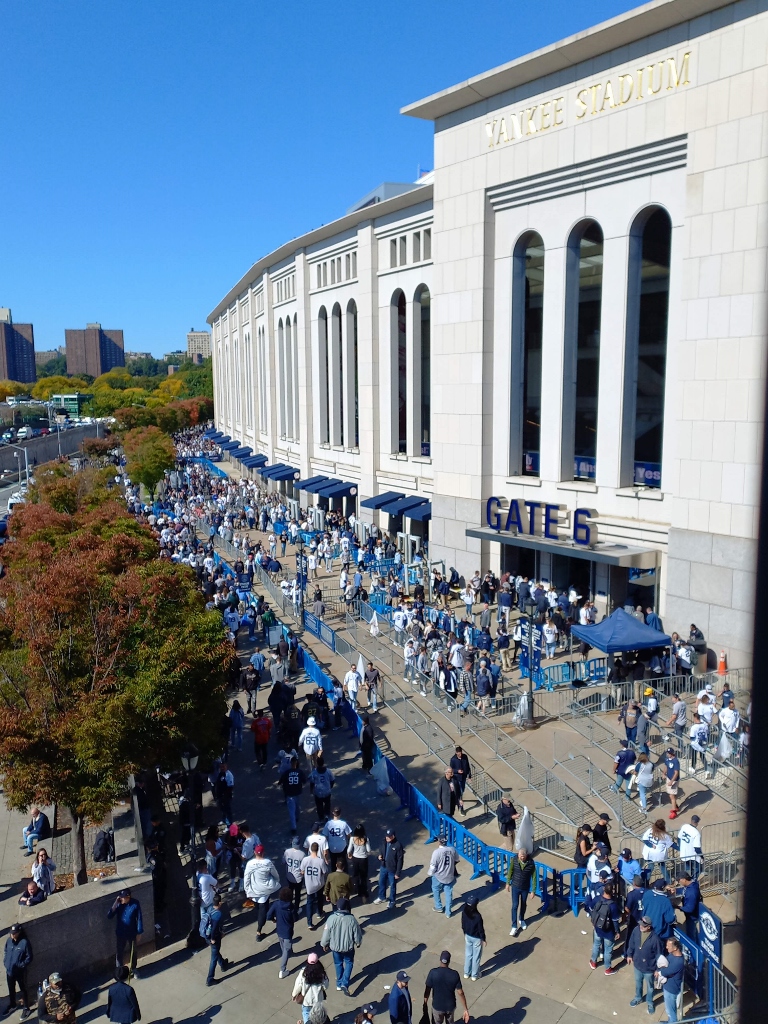 New York Yankees fans
New York Yankees fans
With the crossing of the Harlem River, I left the Bronx and moved to Upper Manhattan. My next destination was the Columbia University that belongs to the group of eight most prestigious universities in the USA that are jointly called the Ivy League. The reason for this name for a group of universities is precisely to emphasise their age or rather the longevity, since ivy very often grows up the walls of old buildings.
I actually first came here many years ago, when I met the son of my then boss, José Luis, who was doing his master studies at the Columbia University. Since I’m mentioning José Luis Jr., I also met him again a couple of days later when I was in the company of Velislav, my New York friend. This was back in 1996 and we went together to the top of the World Trade Centre, where we had a photo of the three of us taken. Bearing in mind what happened later, this is a very interesting souvenir for me.
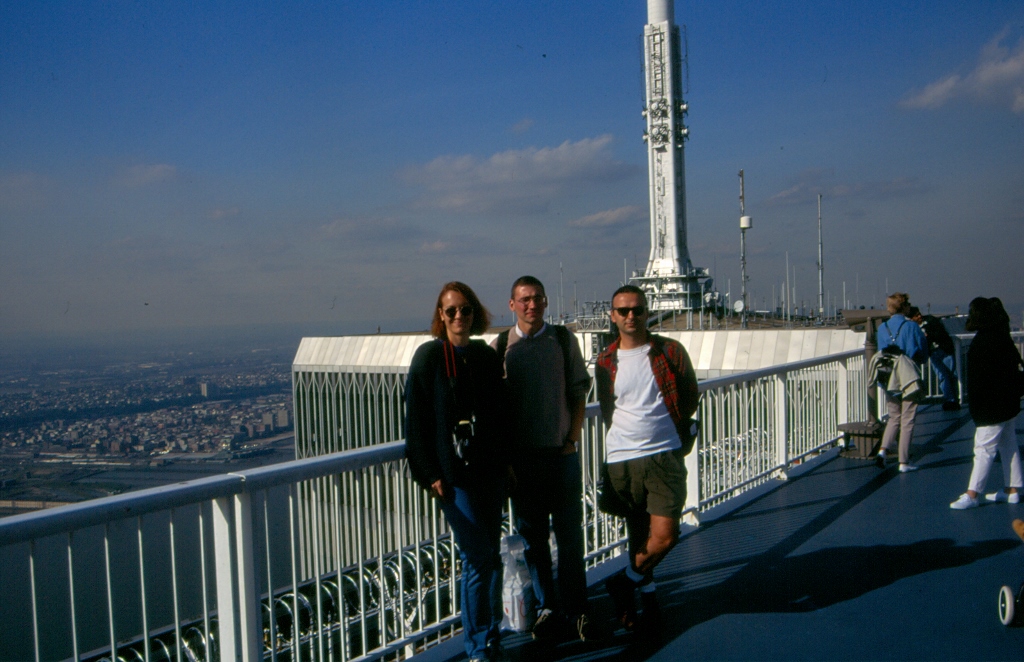 On the top of the World Trade Centre with José Luis Jr. and Velislav
On the top of the World Trade Centre with José Luis Jr. and Velislav
Since I have already dug out this photo from my files, here is another one that shows the spectacular view at New York that could be seen from the top of one of the twin buildings.
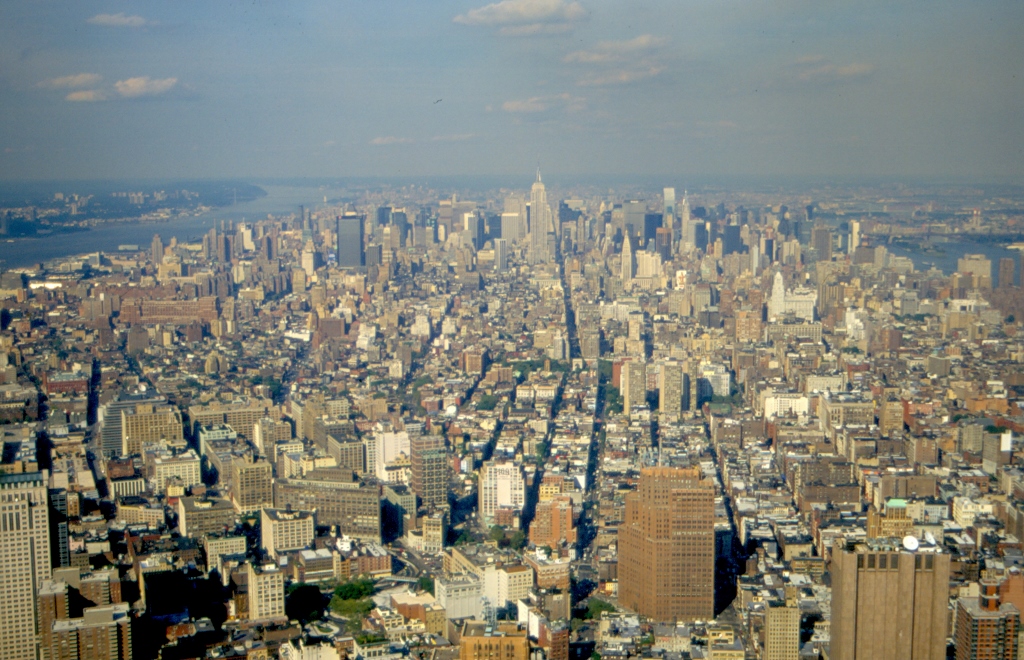 North view from the top of the World Trade Centre
North view from the top of the World Trade Centre
But, let me now go back to my visit to the Columbia University in 2022. Needless to say, I did not actually go to the university itself, but I came here because of a very specific building that I wanted to see and take a photo of. This is the physics and astronomy departments’ building called Pupin Physics Laboratories or Pupin Hall. Of course, it was named like this after Mihajlo Pupin, a Serb who lectured here from 1889 to 1935.
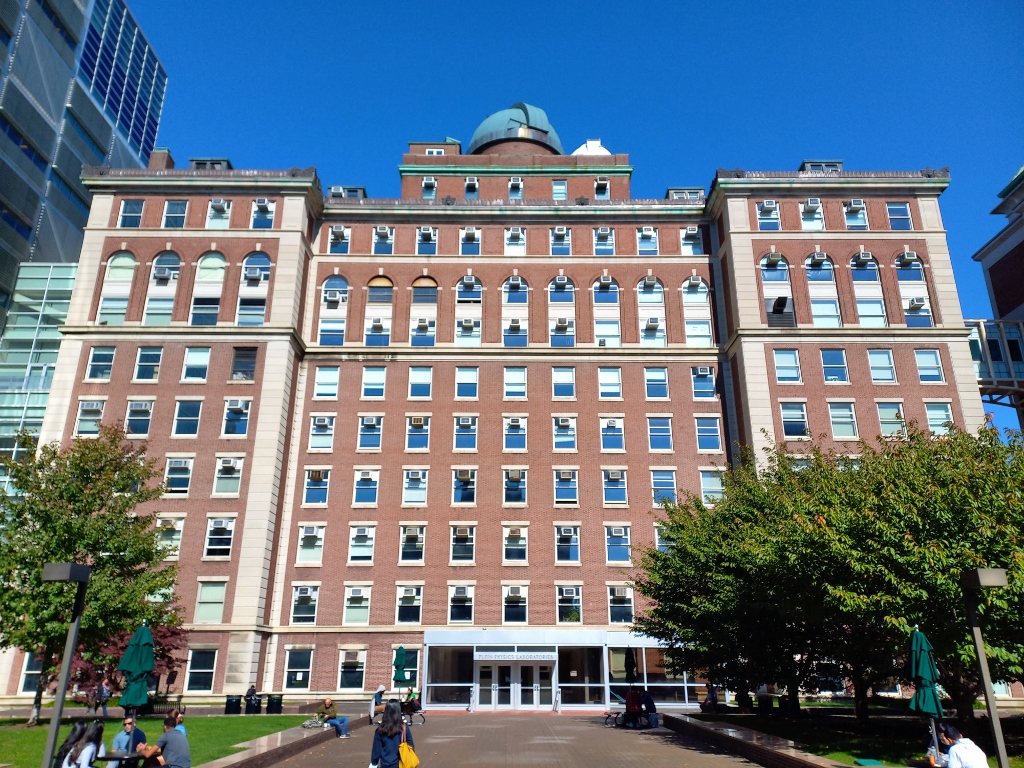 Columbia University: Pupin Physics Laboratories
Columbia University: Pupin Physics Laboratories
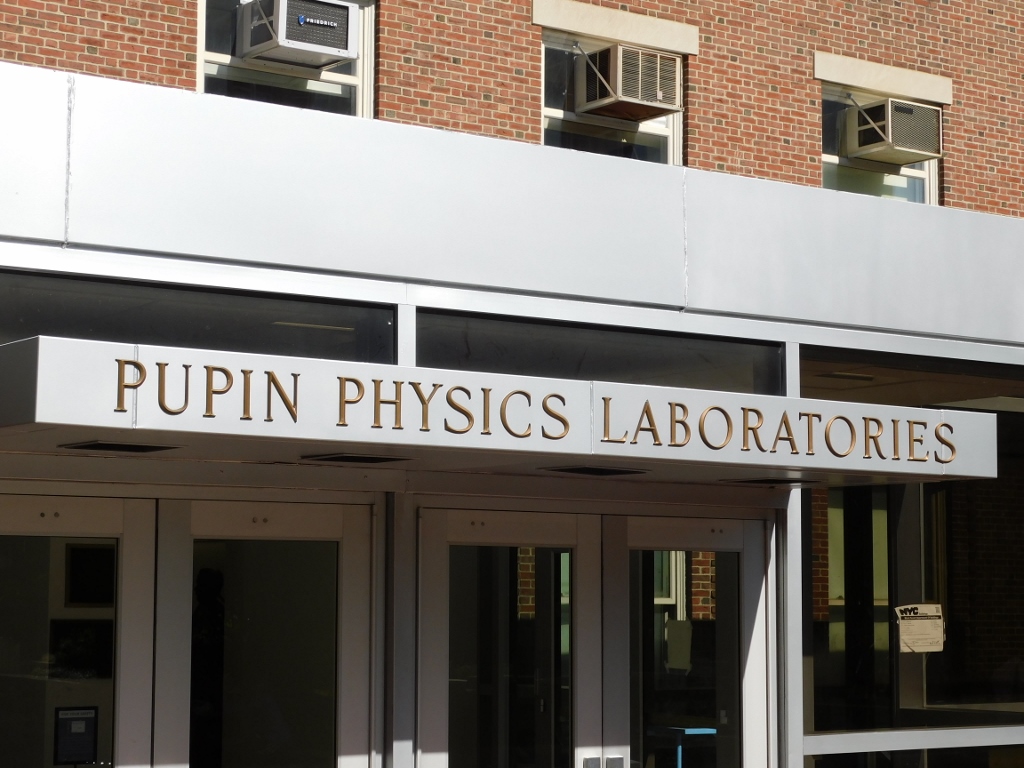 Pupin Physics Laboratories
Pupin Physics Laboratories
I also took the opportunity and walked a little between some of the buildings that belong to the university and I briefly visited St. Paul’s Chapel as well.
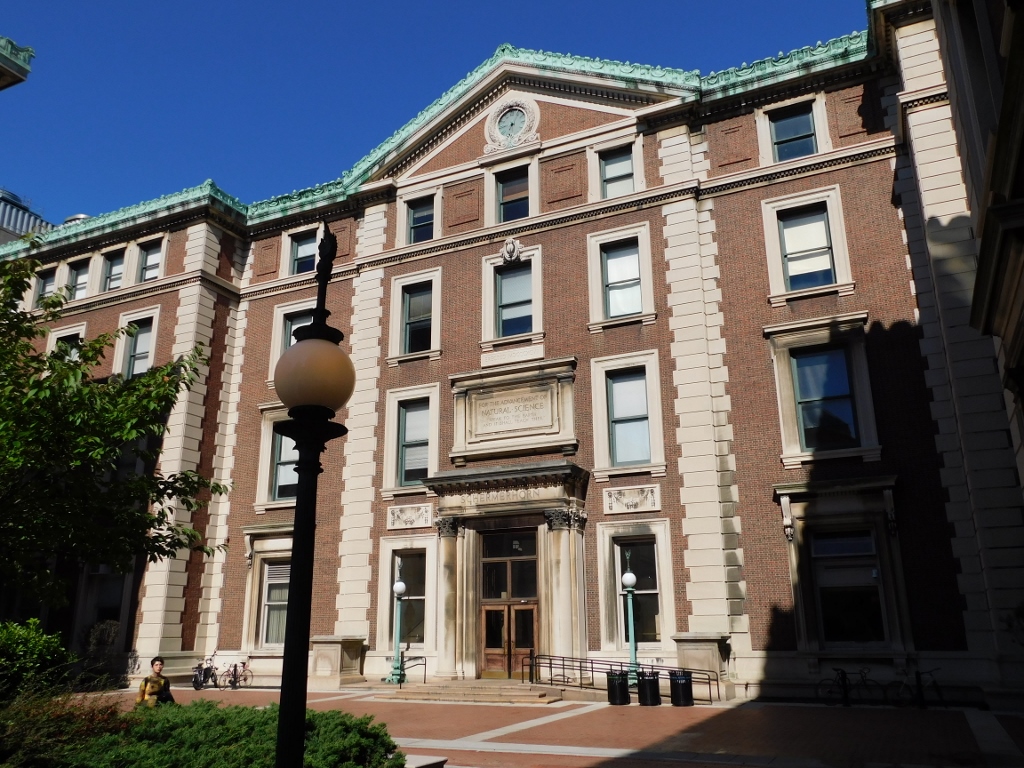 Columbia University
Columbia University
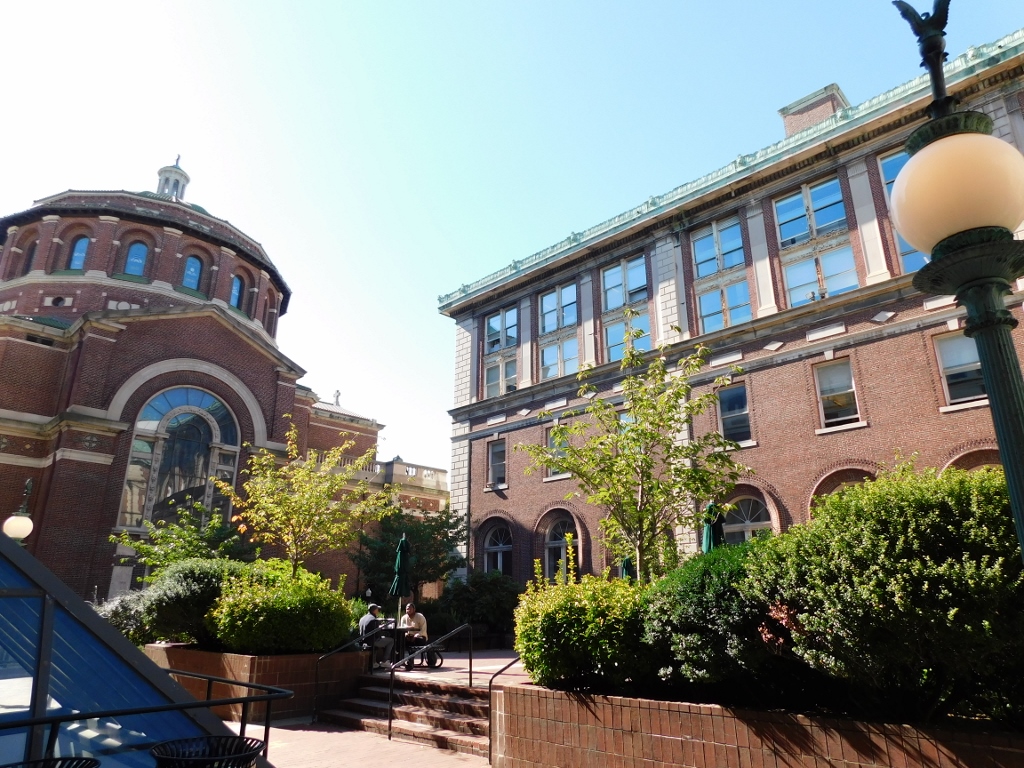 Columbia University
Columbia University
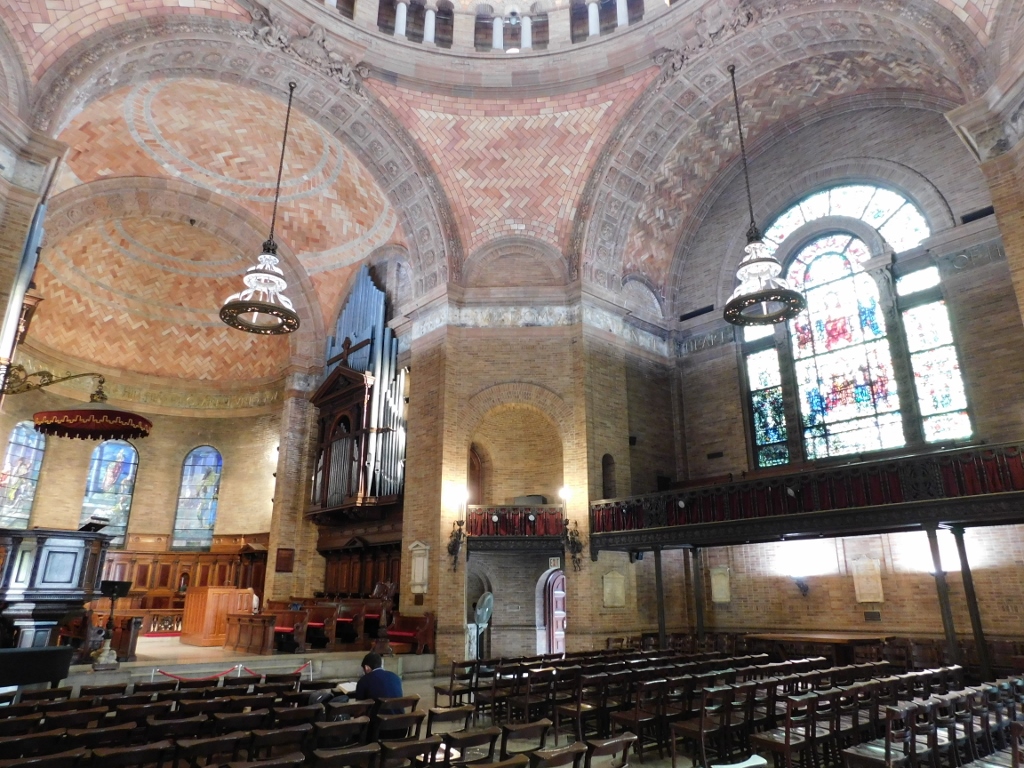 St. Paul’s Chapel
St. Paul’s Chapel
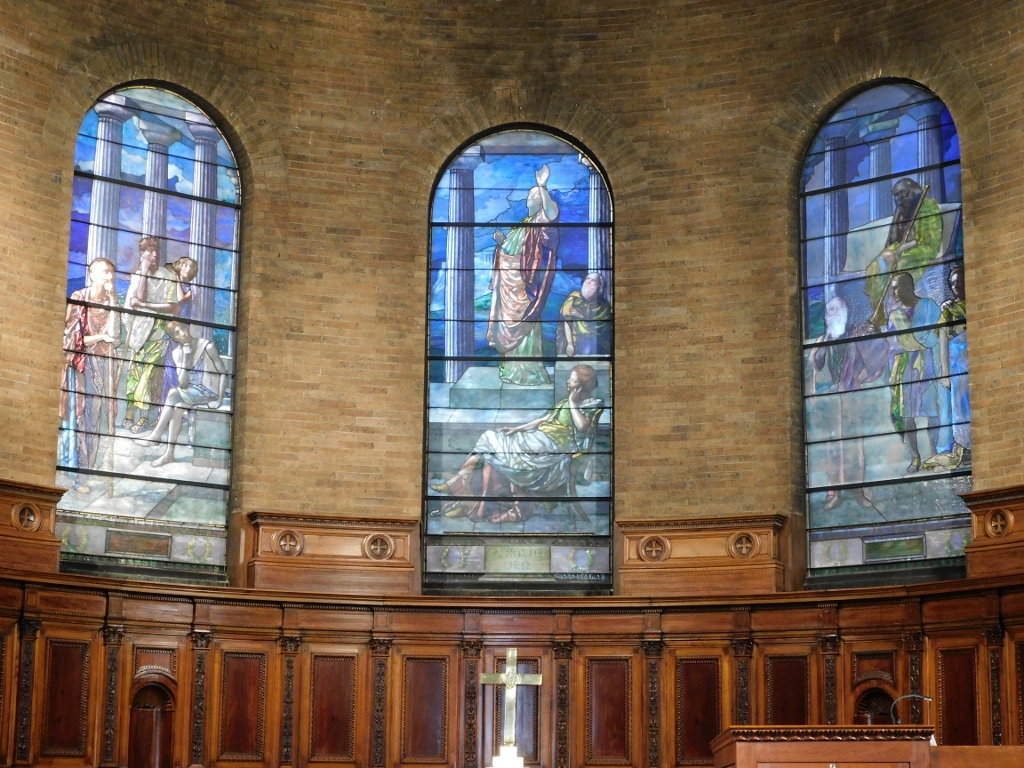 St. Paul’s Chapel
St. Paul’s Chapel
After this, I went several blocks farther in the south direction, for there is the Cathedral of St. John the Divine.
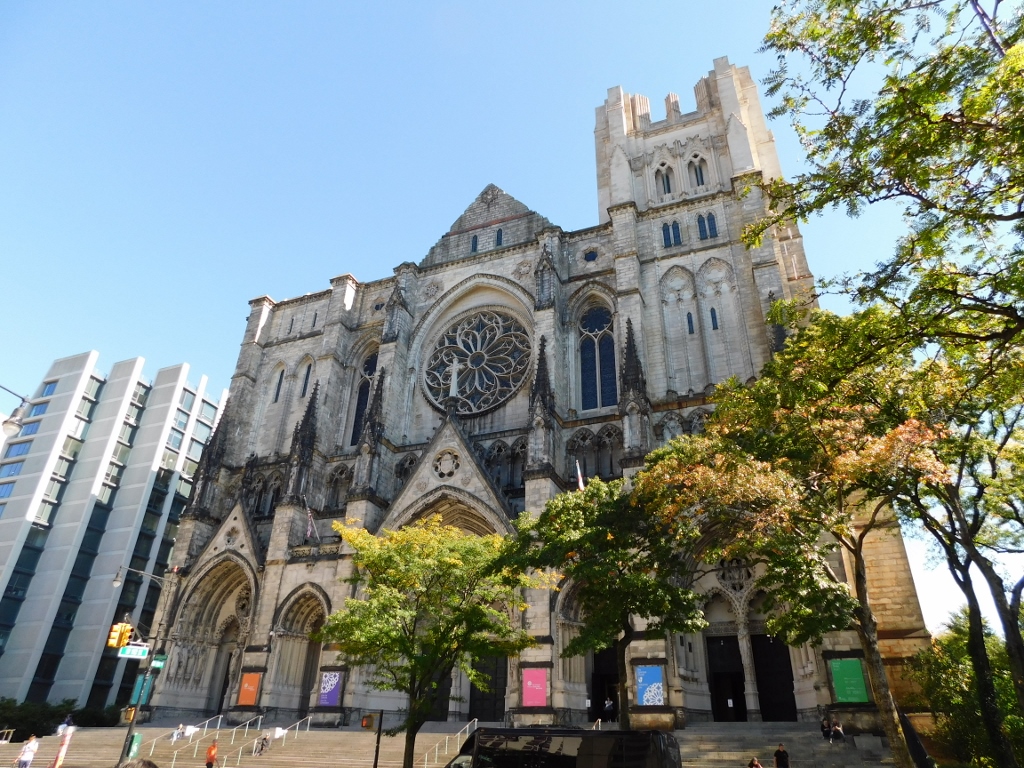 Cathedral of St. John the Divine
Cathedral of St. John the Divine
The construction of this cathedral started in 1892, but was never finished for all sorts of reasons. And yet, by the area, this is one of the biggest churches in the world. I entered there with an intention to make a quick circle around, but as it turned out this can be done only if you buy a ticket. It is a question of principle with me that I do not pay for tickets when I want to enter a church. Perhaps I could make an exception in the case of a couple of them in the world, but this was certainly not such case. So, I just took a photo of the central nave and got out.
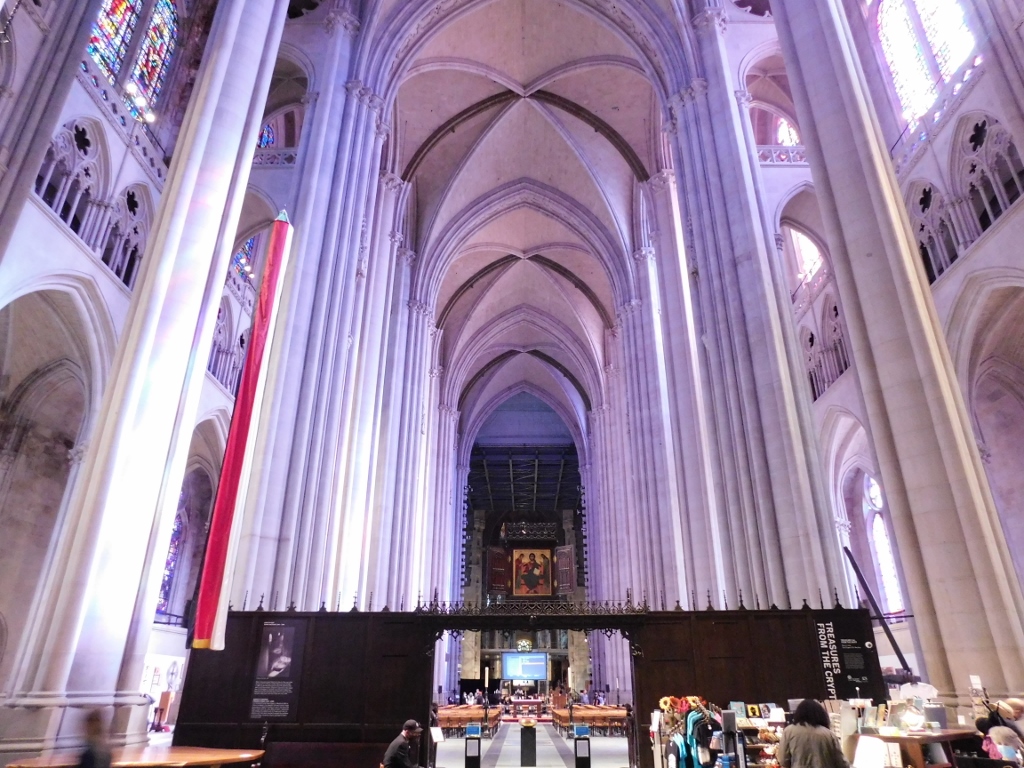 Cathedral of St. John the Divine
Cathedral of St. John the Divine
I also took a photo of the cathedral from the side and then I headed for the Morningside Park.
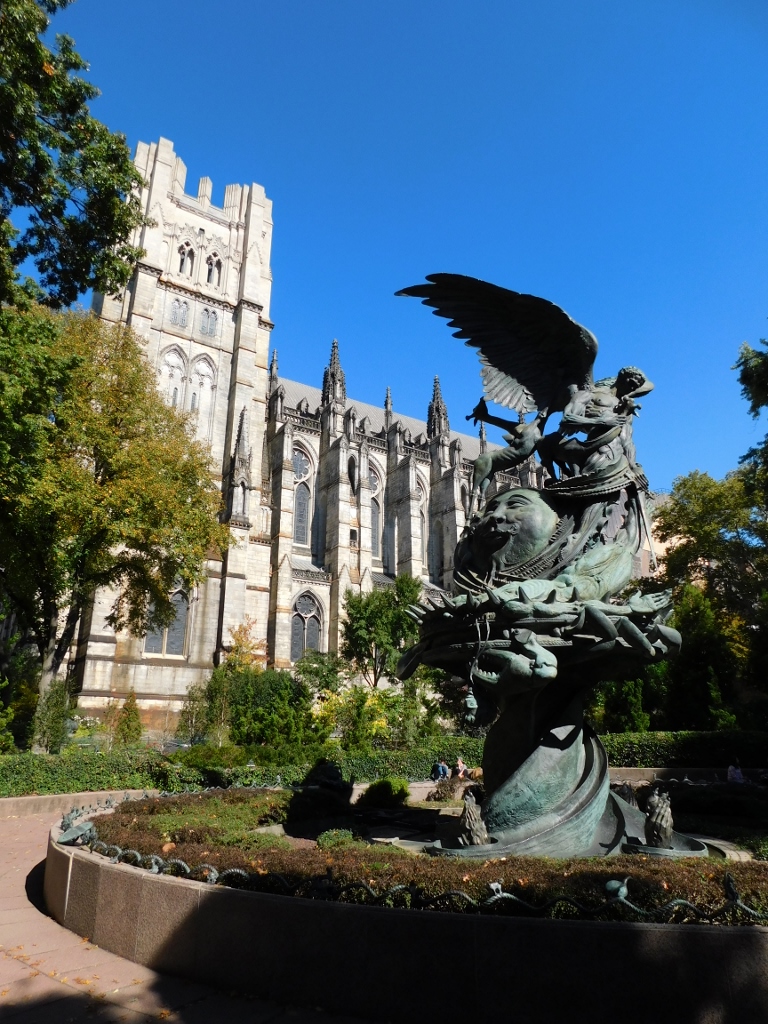 Cathedral of St. John the Divine
Cathedral of St. John the Divine
The Morningside Park is a nice, big park of 12 hectares in Upper Manhattan. I did not walk around it a lot, but I did pass through its south sections.
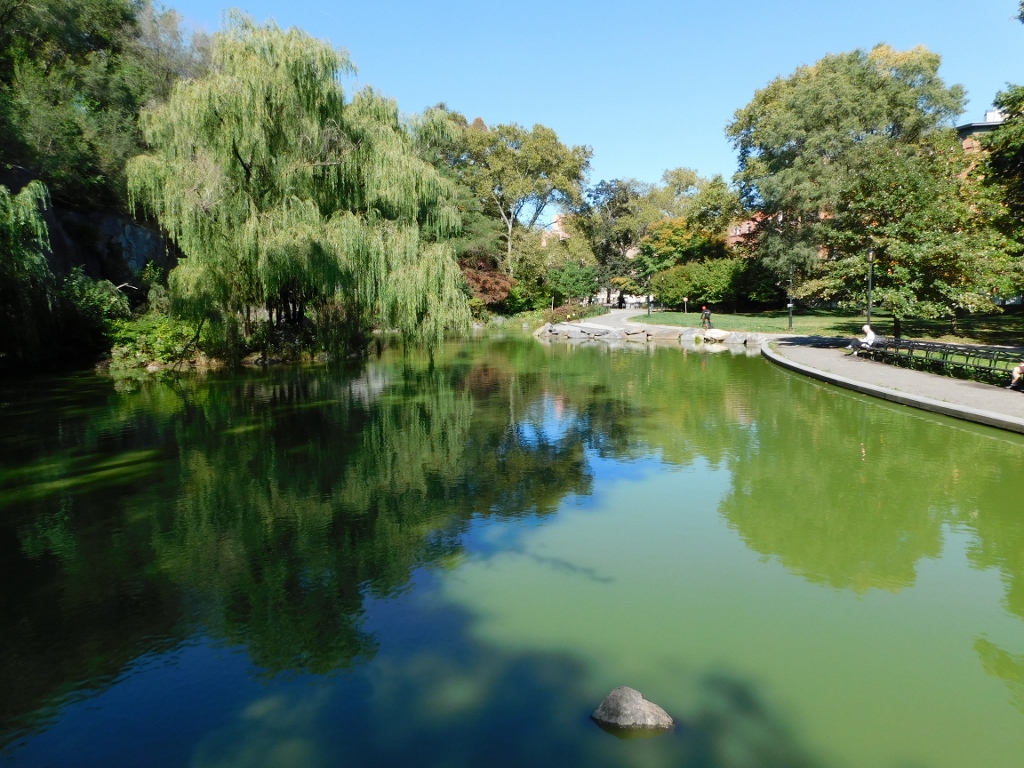 Morningside Park
Morningside Park
I left the park at the Lafayette Square where there is Lafayette and Washington Monument. Actually, I did not deal with the monument too much, which can be concluded from the photo below, since I took the photo from the back of the monument, as I preferred the greenery of the park.
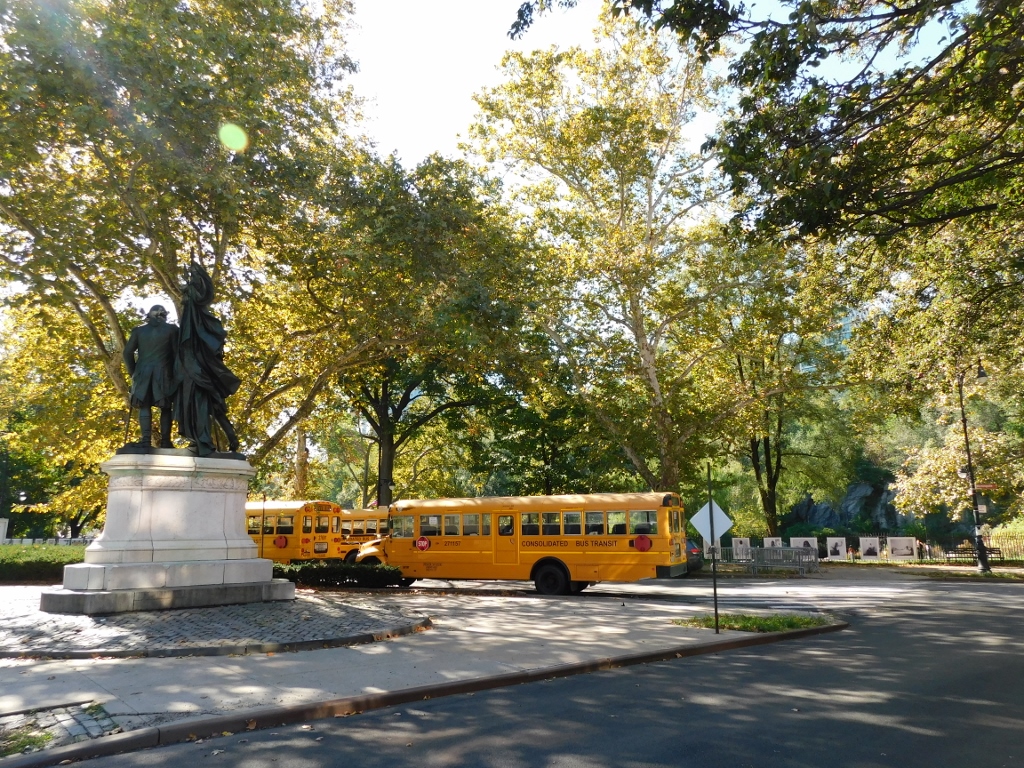 Lafayette Square
Lafayette Square
Here I already entered into the area of Harlem. Although famous as a neighbourhood of New York City where there was a cultural and artistic revival during the 1920s and 1930s known as the Harlem Renaissance, because of the Great Depression from the third and the fourth decades of the 20th century, as well as the subsequent deindustrialisation of New York, there was, unfortunately, a significant increase in poverty in Harlem and consequently of crime. In the 21st century, the situation had considerably changed for the better and nowadays Harlem has become a place of “urban gentrification,” which is the term I have already explained in the previous sequel of my travel stories. Anyway, nowadays Harlem is a popular tourist destination.
My plans did not include any detailed visit to Harlem, but I did go for a nice coffee and a piece of cake. I quite enjoyed this break, especially since I had 3 km on foot to the next destination. Although there are some very interesting places in Harlem, I just took a couple of photos along the way, before moving from Harlem to the area of the Central Park.
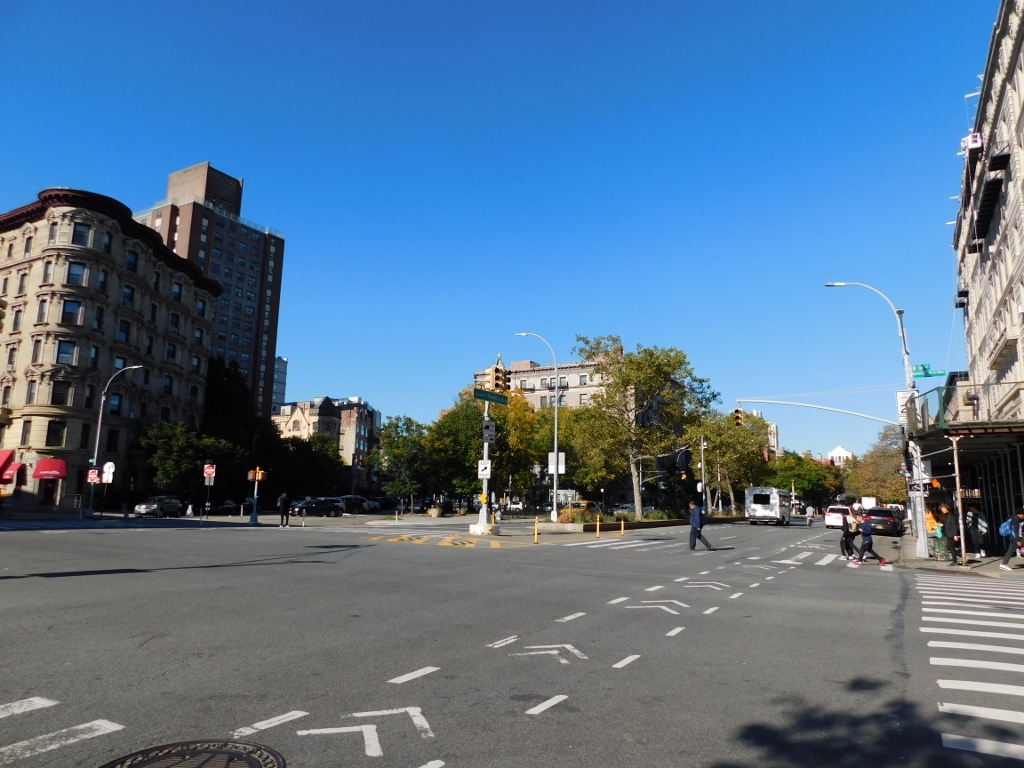 Harlem
Harlem
 Harlem: First Corinthian Baptist Church
Harlem: First Corinthian Baptist Church
I also just walked through the Central Park or to be more accurate through its north half, for now I was heading for the museums.
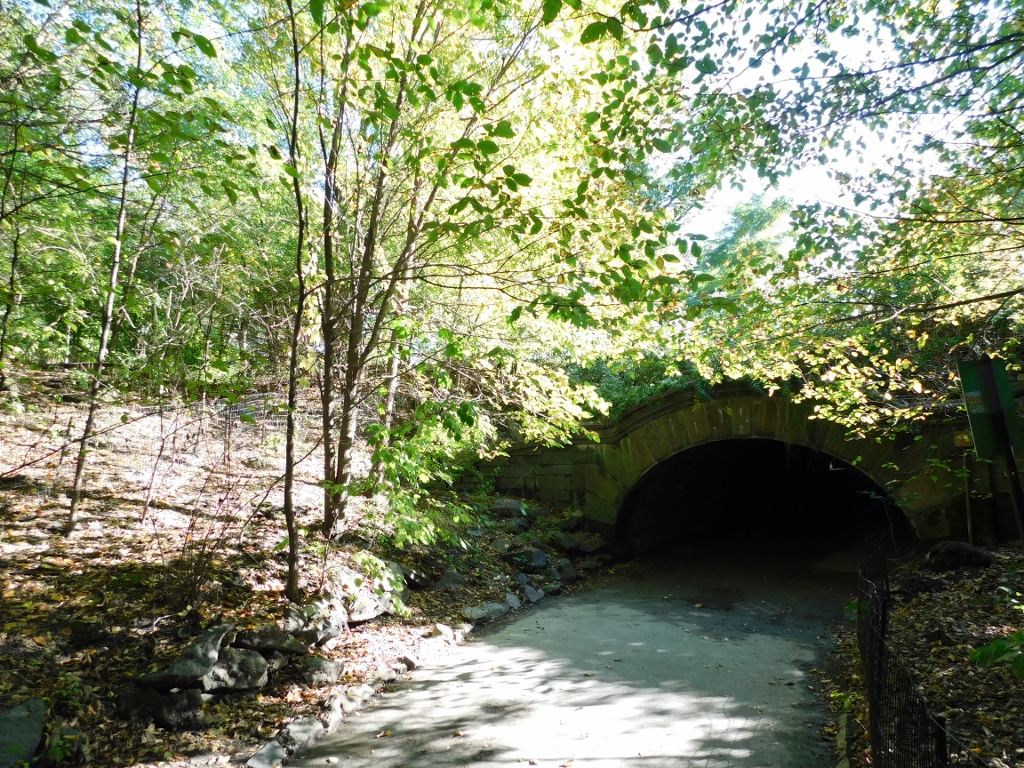 Central park, a detail
Central park, a detail
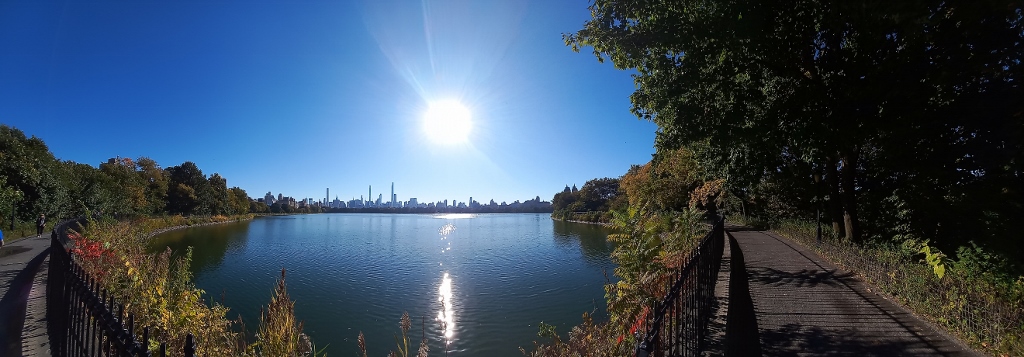 Central park, a detail
Central park, a detail
There are two museums on the 5th Avenue that I had tried to visit a few days earlier, but they were closed. Now I knew they were open, so I wanted to visit them this time. First I went to the museum called the Neue Galerie New York.
This is a smallish museum opened in 2001 that displays selected pieces of German and Austrian art from the beginning of the 20th century. Although the museum exhibits some very important pieces, paintings and decorative objects, by various artists, one of the most interesting is the “Portrait of Adele Bloch-Bauer I” by Gustav Klimt which the museum procured in 2006.
But, when I reached the museum, it turned out that it was being renovated and that only one of its floors was open, admittedly, the one where the most attractive painting in media terms was displayed and that was precisely this portrait. The museum was very fair by not charging for tickets, but it gave the possibility to the visitors to give donations. Literally whatever one wanted to. On the other hand, no photography was permitted on the entire floor where the painting was displayed. Well, OK. I went to see that painting as well as the others that could be seen there.
After that I realised it would be good, since I was there already, to go to the toilet that was located in the museum’s basement. In front of the toilets there was a wide hallway and I noticed a park bench there. When I finished with my “business,” I took the advantage of the very good internet connection offered by the museum, so I sat down on that bench in order to check my mail and messages. While I was staring at my phone, two women approached and asked me if I could get up in order for the two of them to sit there. I was a little confused, but when I got up I finally realised what this was about. The two of them wanted to have their photo taken right there. That would be extremely weird if this was an ordinary bench or an ordinary hallway in front of a toilet. But, this was at the Neue Galerie New York and there, on the wall behind the bench, there was a reproduction of the “Portrait of Adele Bloch-Bauer I”. Needless to say, afterwards I took a photo of it, too.
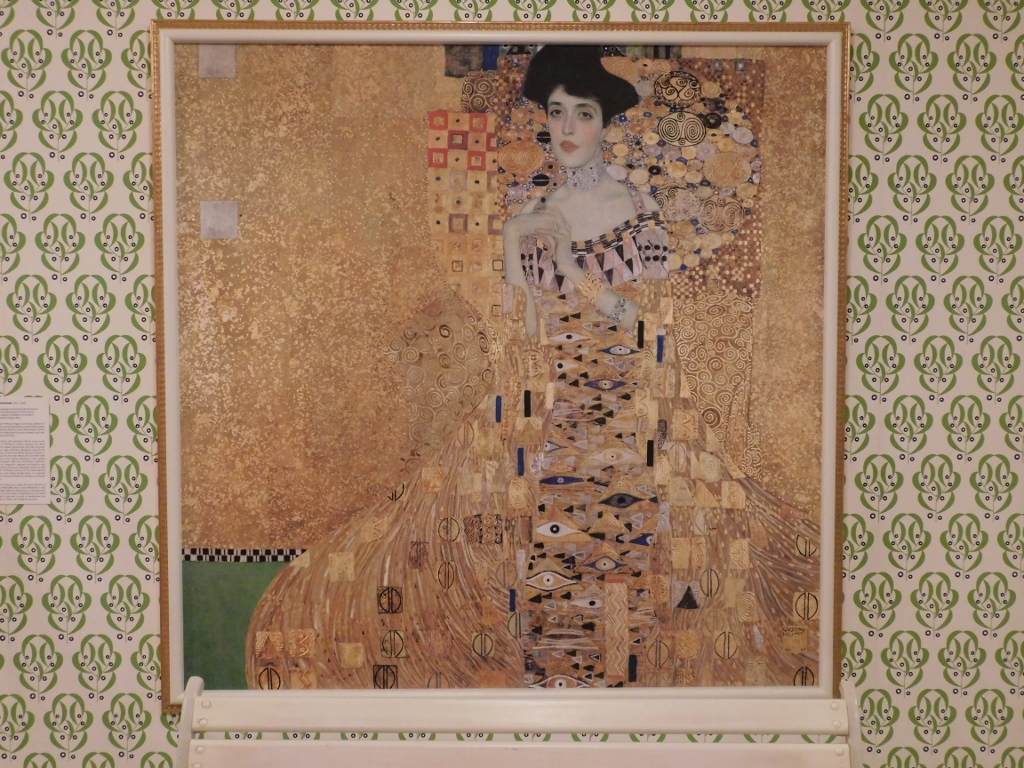 Reproduction of the painting on the wall behind the bench
Reproduction of the painting on the wall behind the bench
I found this experience quite a lot of fun. When I left the gallery I walked a couple of blocks farther in order to visit another museum. This was The Solomon R. Guggenheim Museum or just the Guggenheim that had also been closed a few days earlier, but I had checked on the internet and now I knew it was open.
The museum was named after Solomon Guggenheim, a businessman and a collector of art, who founded it in 1939 as the Museum of Non-Objective Painting. The museum’s collection includes pieces from the Impressionists to the modern art and, yes, the museum was open on this day indeed, but this related only to a couple of special exhibitions. The main exhibit could not be seen, since the museum was preparing some new one and the interior was being rearranged. I could only enter the central area of the museum and possibly visit those special exhibitions. I did get in and took a few photos, but then I simply got out.
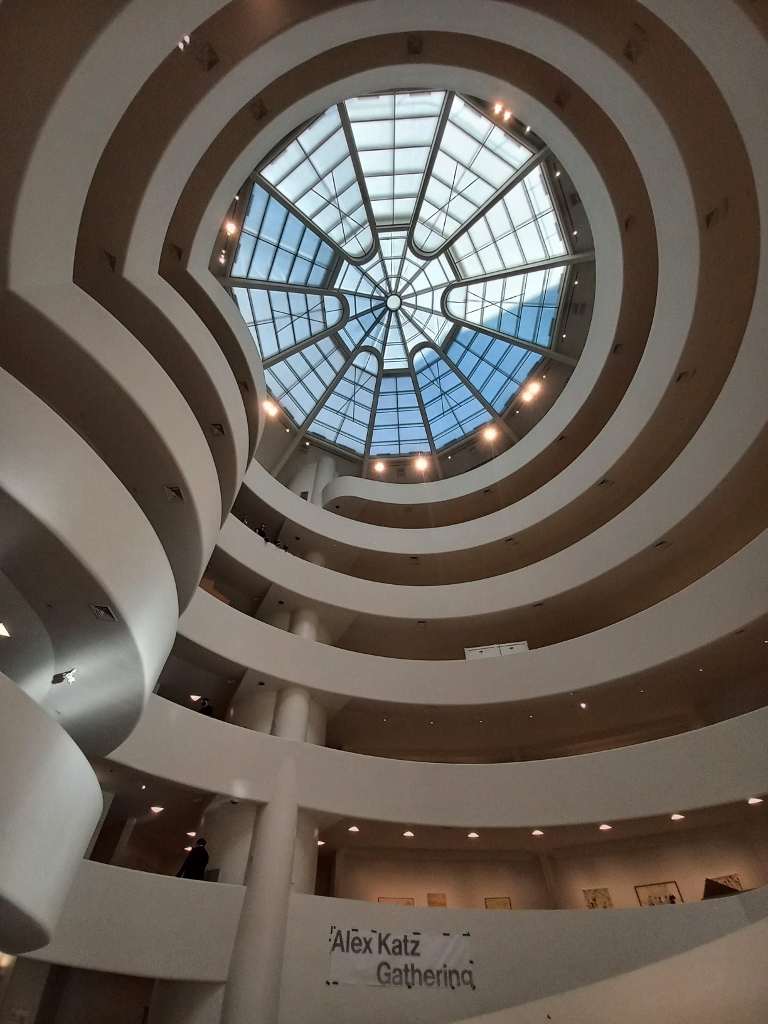 The Solomon R. Guggenheim Museum
The Solomon R. Guggenheim Museum
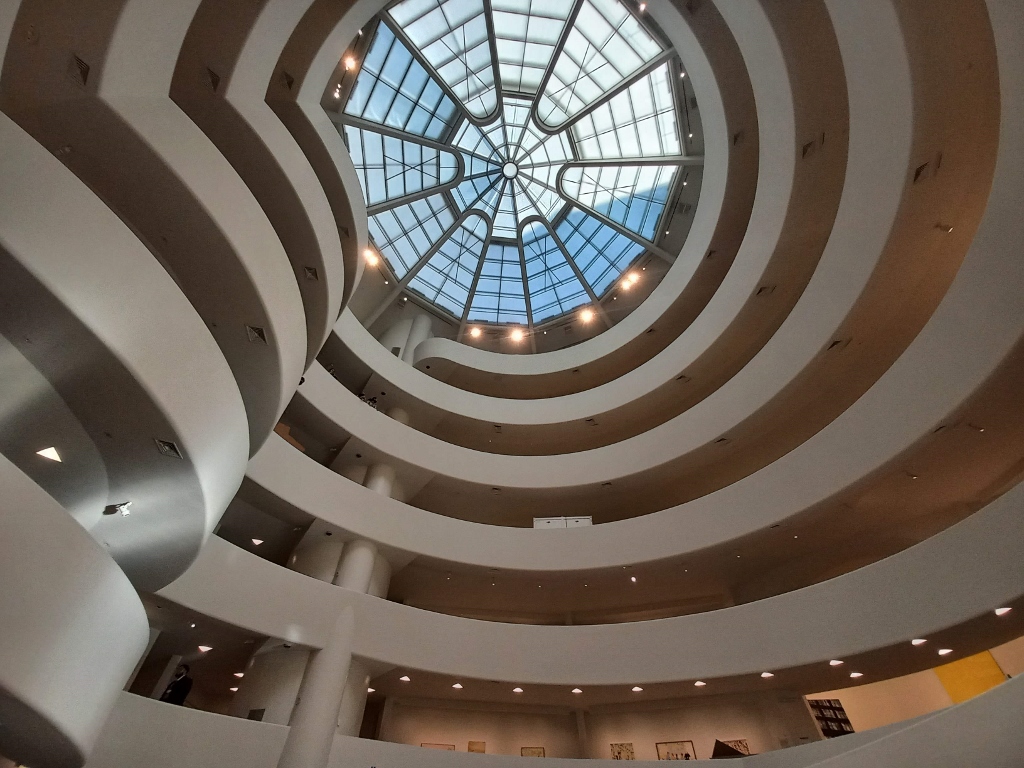 The Solomon R. Guggenheim Museum
The Solomon R. Guggenheim Museum
As far as I am concerned, the Guggenheim and I are through. This was my third attempt to see the museum’s main exhibition – the first time there were some works being carried out inside (in 2016), the second time it was a non-working day and now, the third time, there were again some works being conducted here. There will certainly be no fourth attempt on my part, so the museum does not need to worry. After all, just like me.
Still, before heading for the subway in order to go back home, once again I took a photo of the museum from the outside since it is quite recognisable by its unusual shape that was designed by architect Frank Lloyd Wright.
 The Solomon R. Guggenheim Museum
The Solomon R. Guggenheim Museum
Although there was still sunlight, it was late afternoon and I was quite tired from all the walking. So I just continued some more along the Fifth Avenue, crossing Park Avenue a little later, and then I went down to the underground.
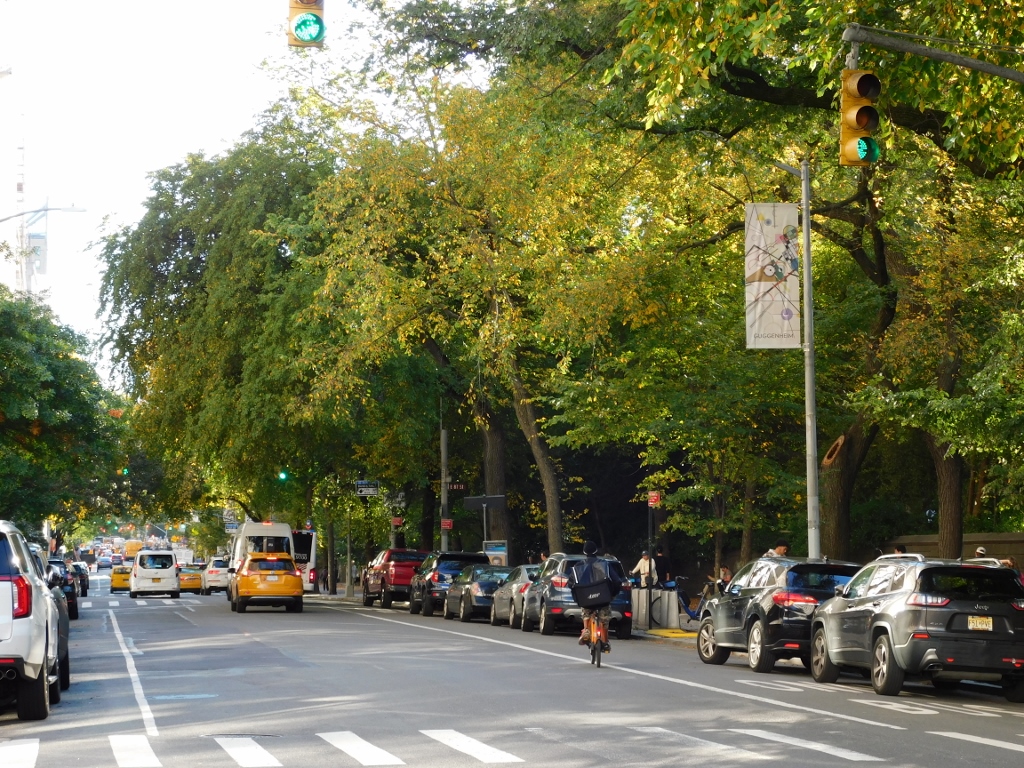 Fifth Avenue
Fifth Avenue
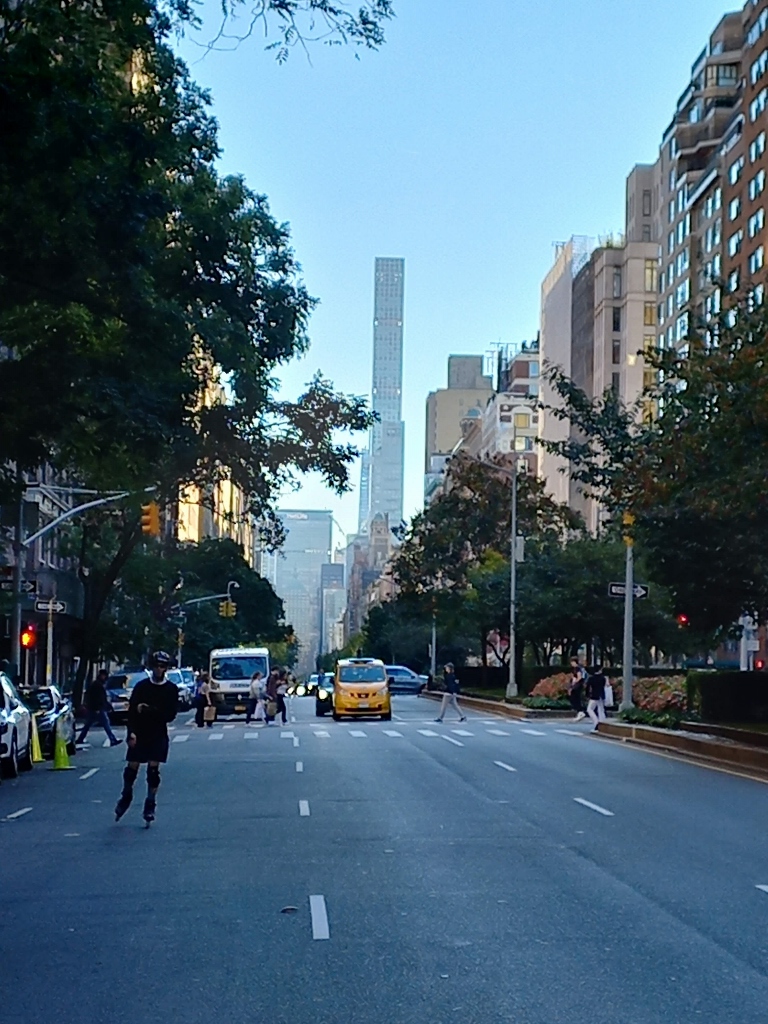 Park Avenue
Park Avenue
As I was changing trains, I came across a couple of extraordinary musicians! I just had to film them a little.
Again very content with my plans and how I spent the day, I went back to my friends’ with whom I simply continued to hang around over the next few days.